Greedy algorithms make locally optimal choices at each step in the hope of finding a globally optimal solution. The activity selection problem involves choosing a maximum set of activities that do not overlap in time. The greedy algorithm for this problem sorts activities by finish time and selects the earliest finishing activity at each step. This algorithm is optimal because the activity selection problem exhibits the optimal substructure property and the greedy algorithm satisfies the greedy-choice property at each step.
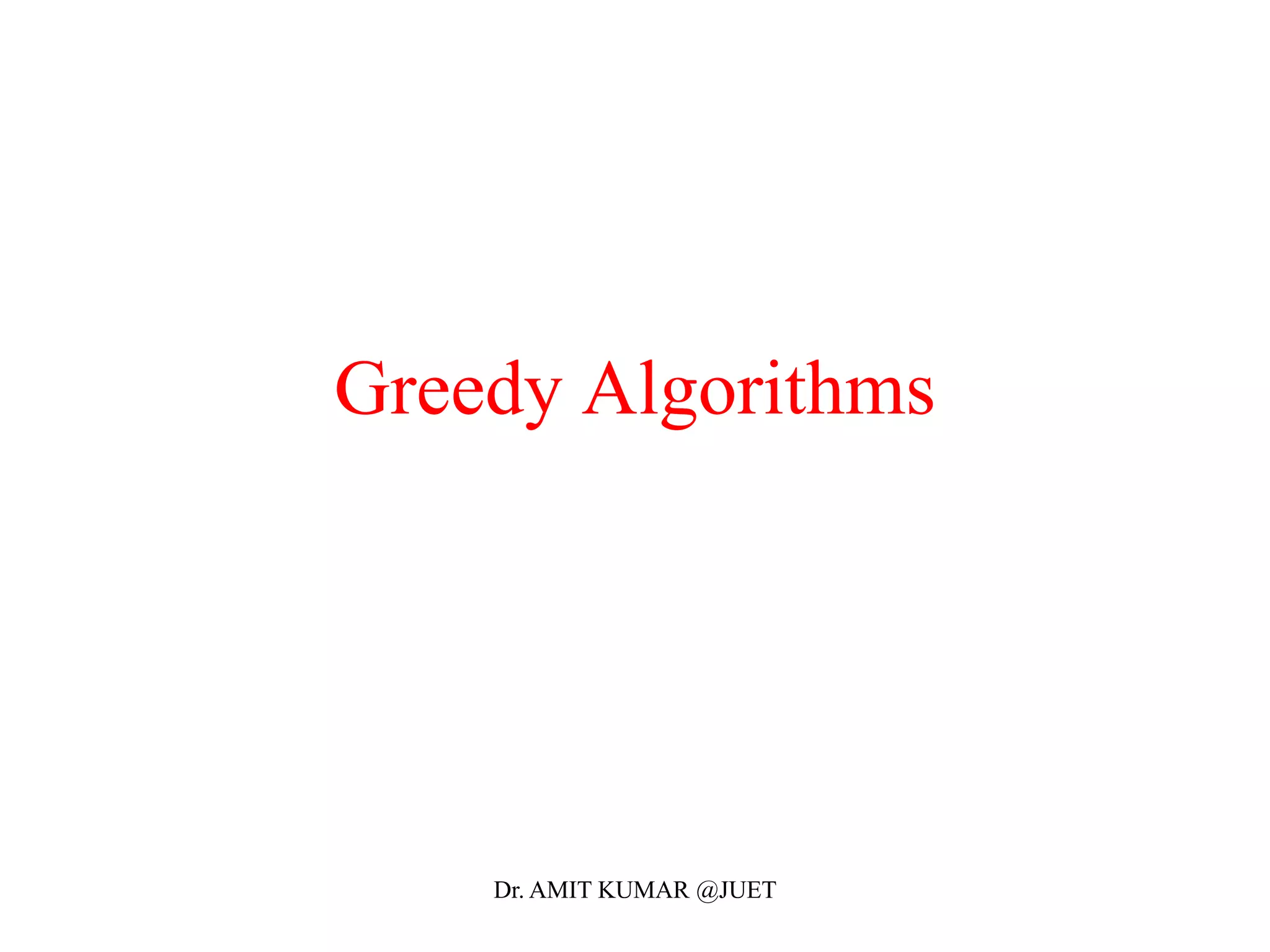
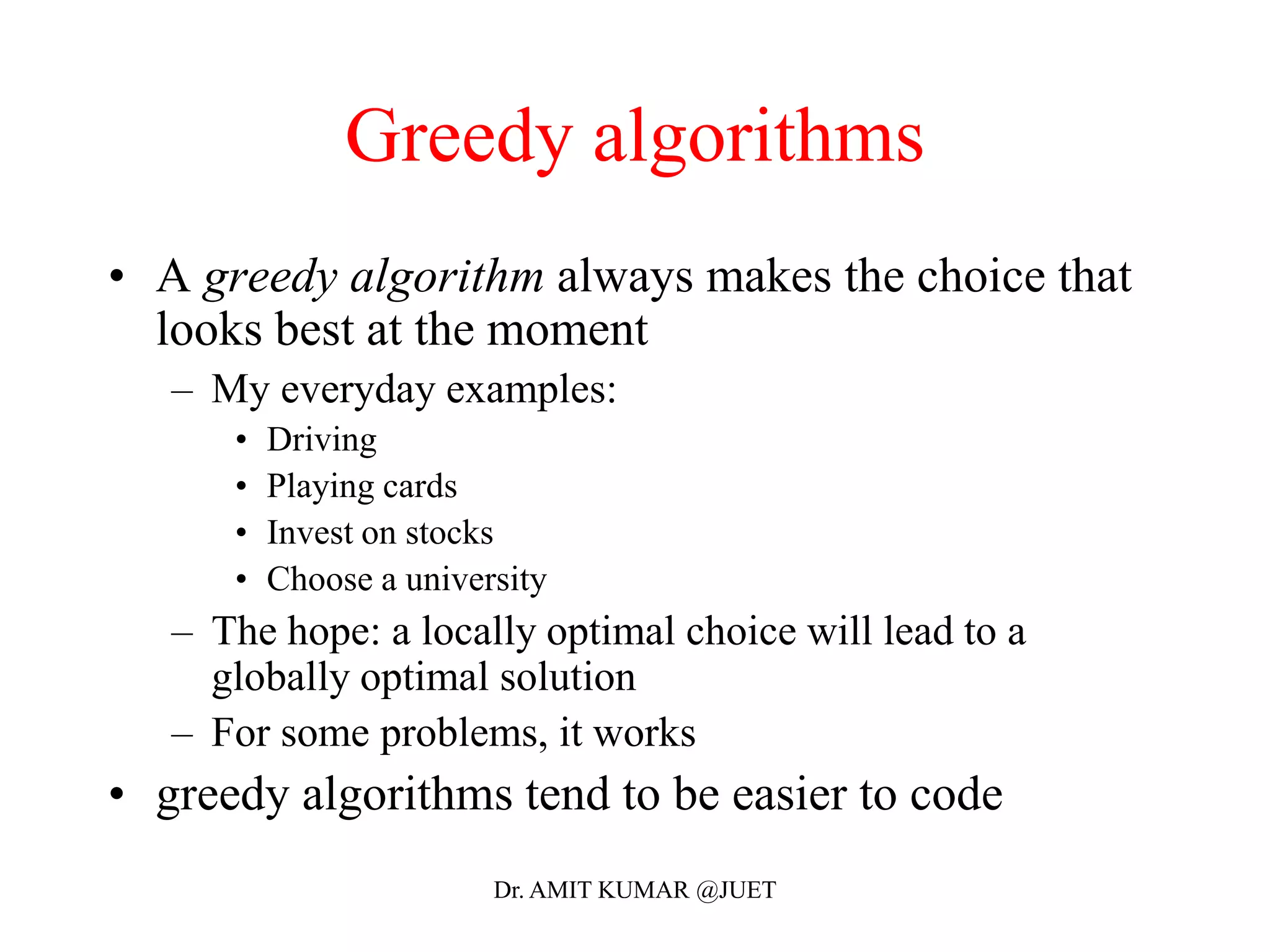
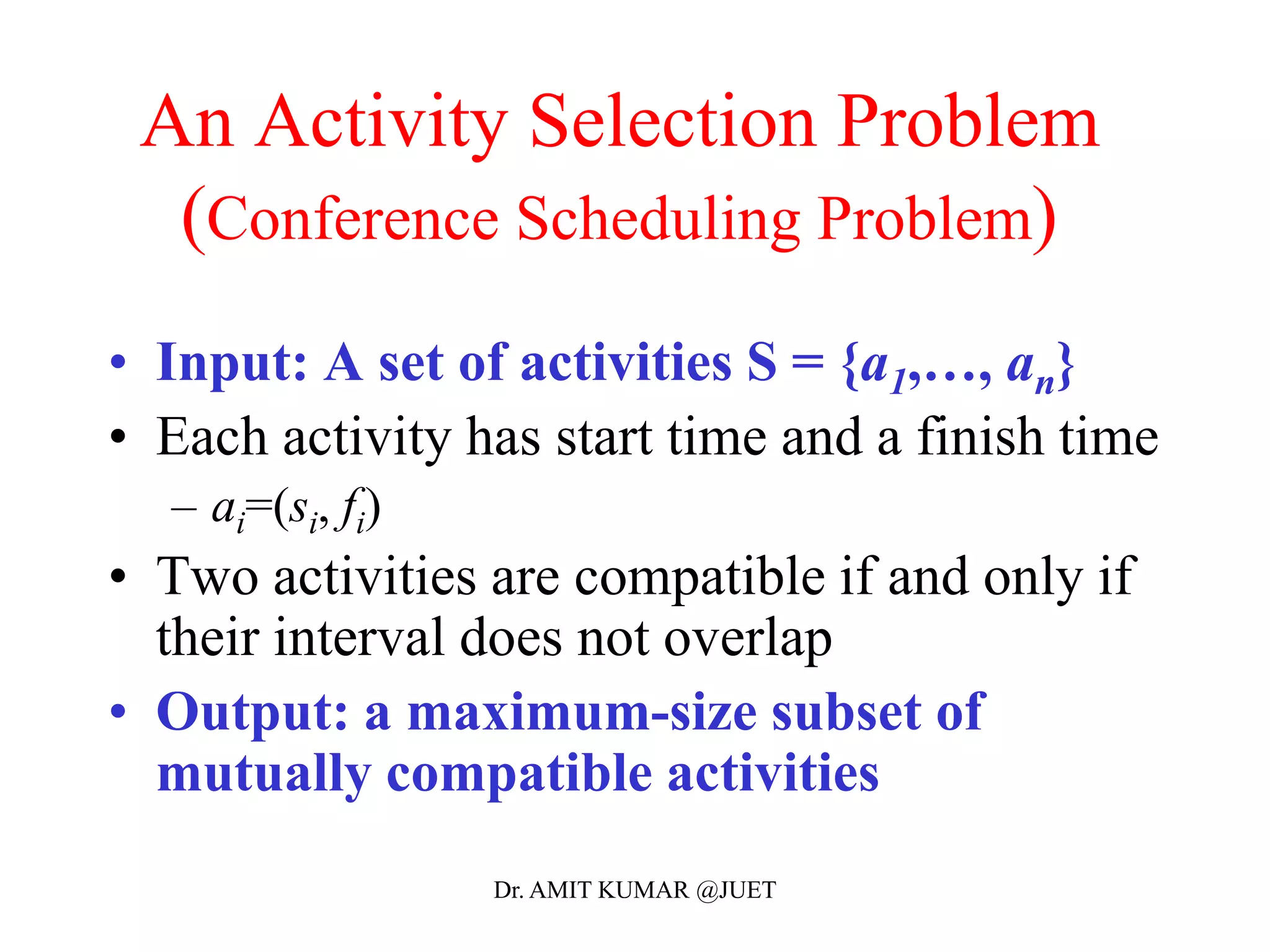

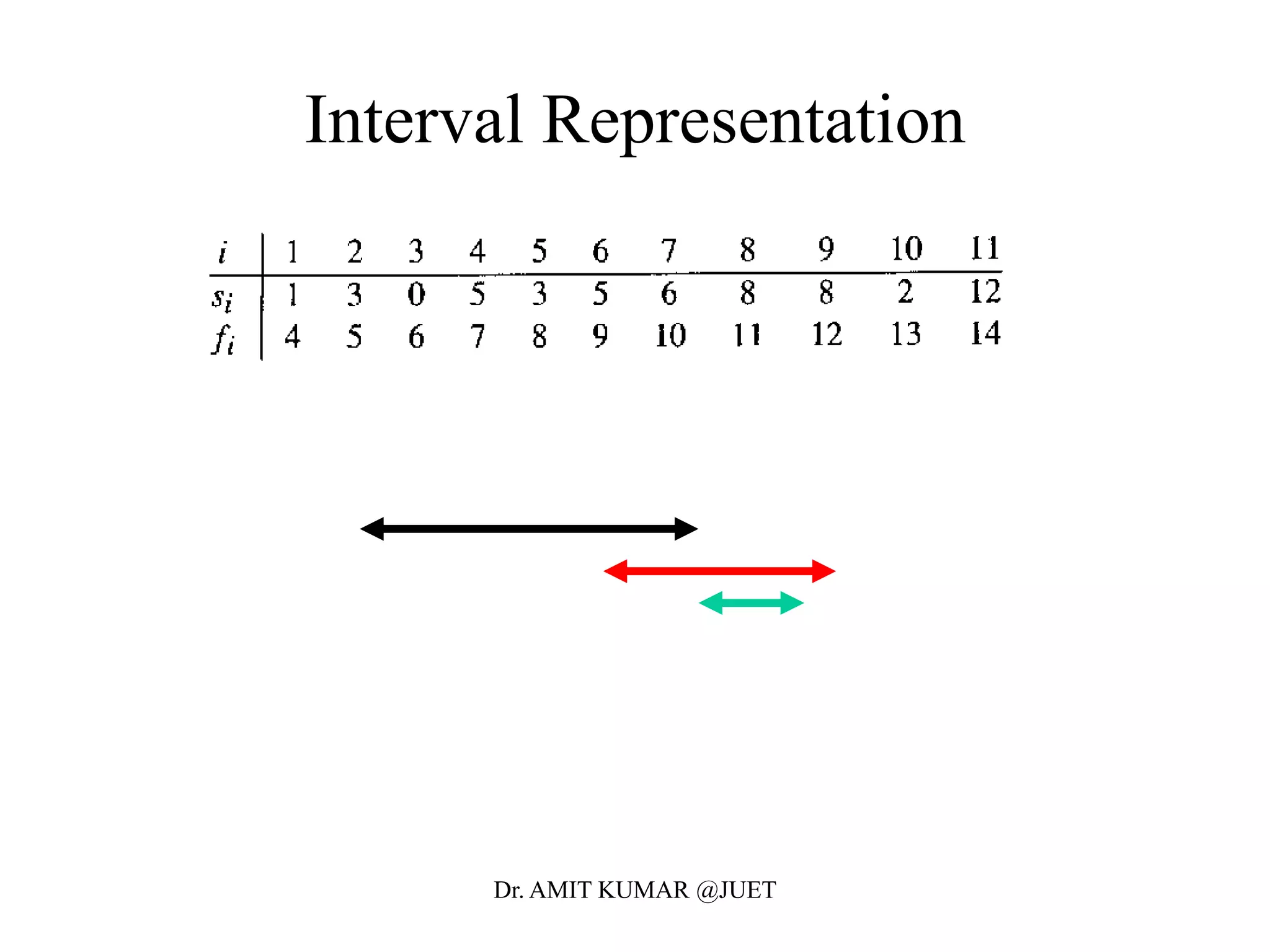

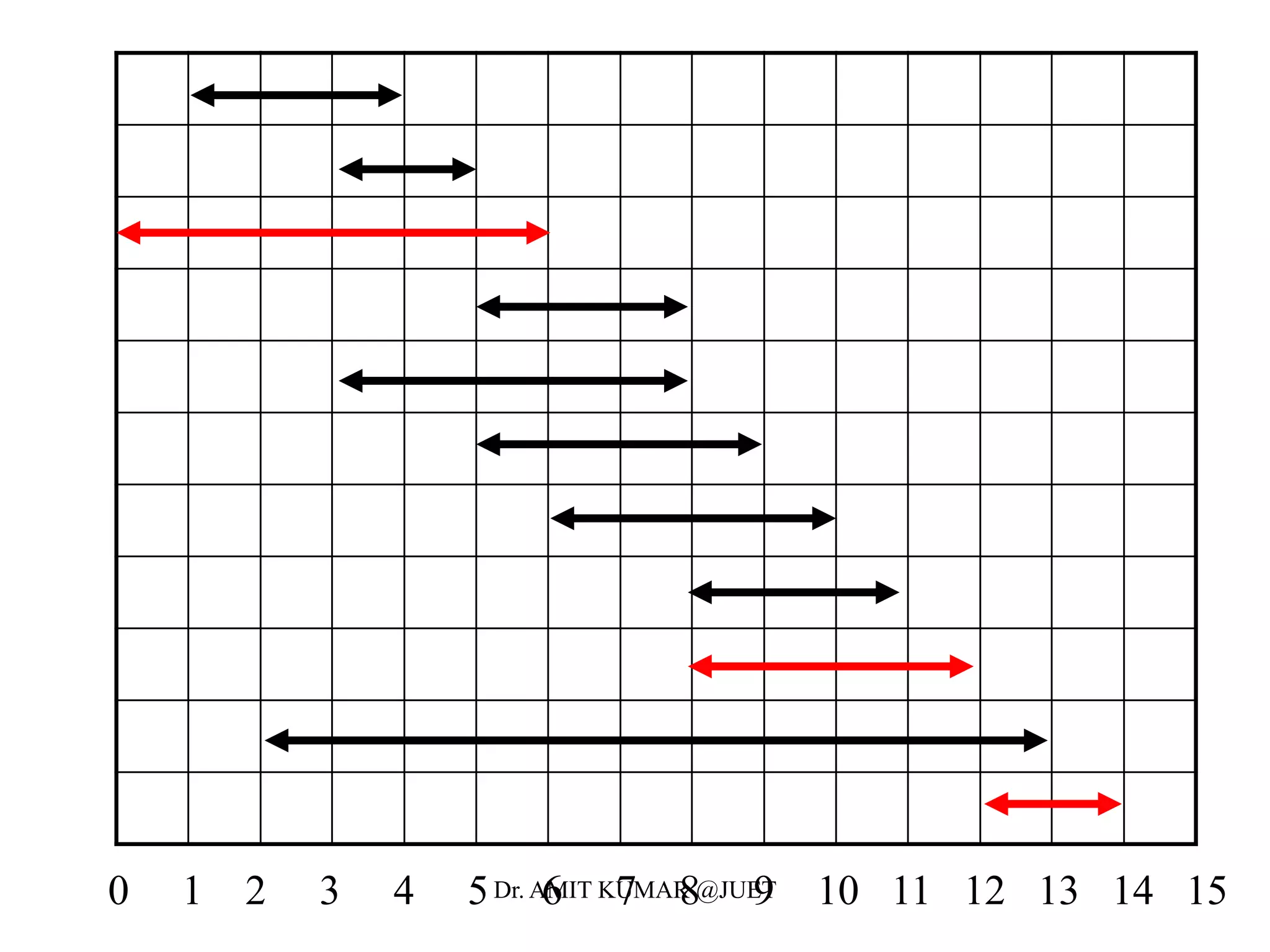
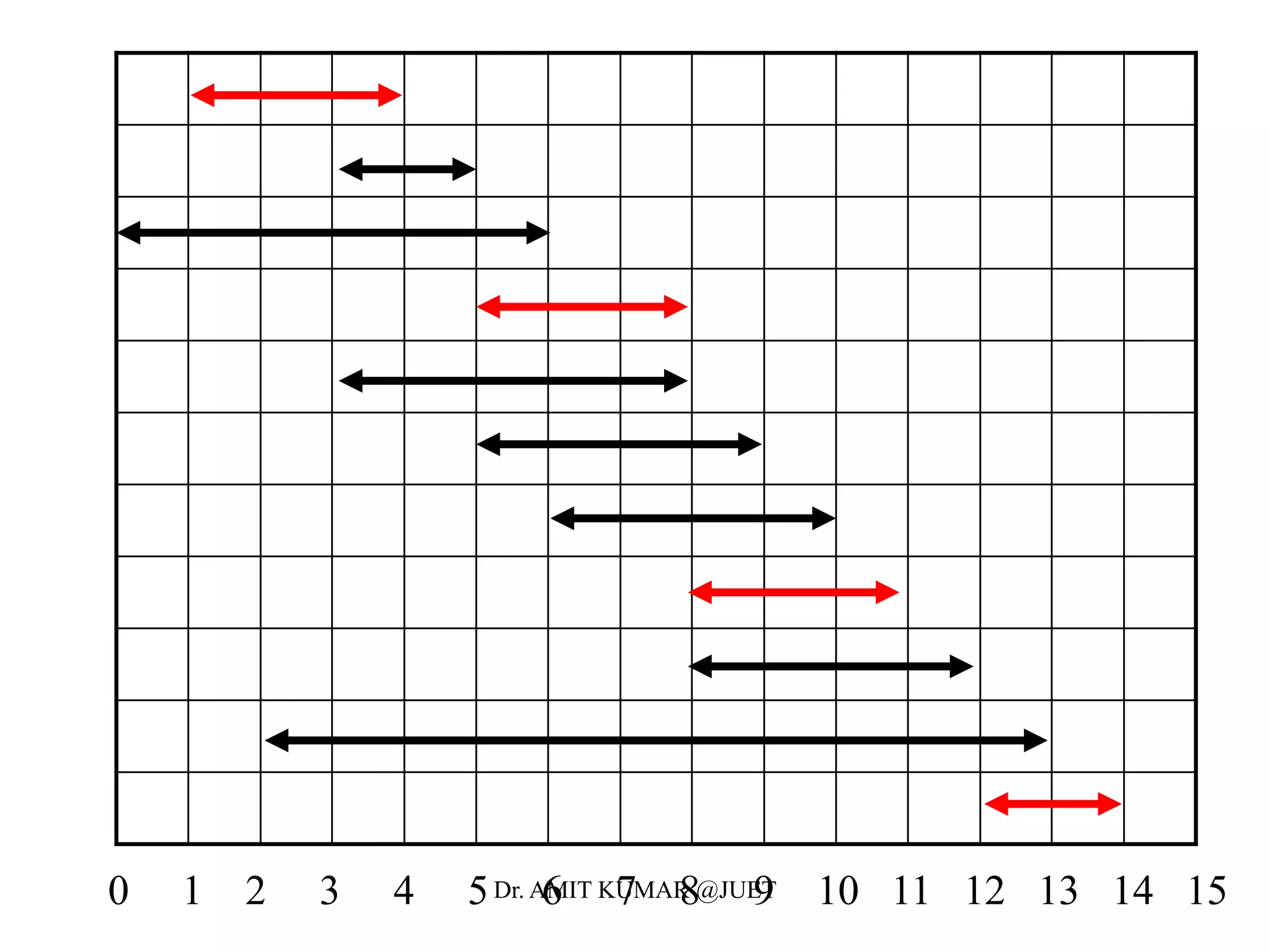
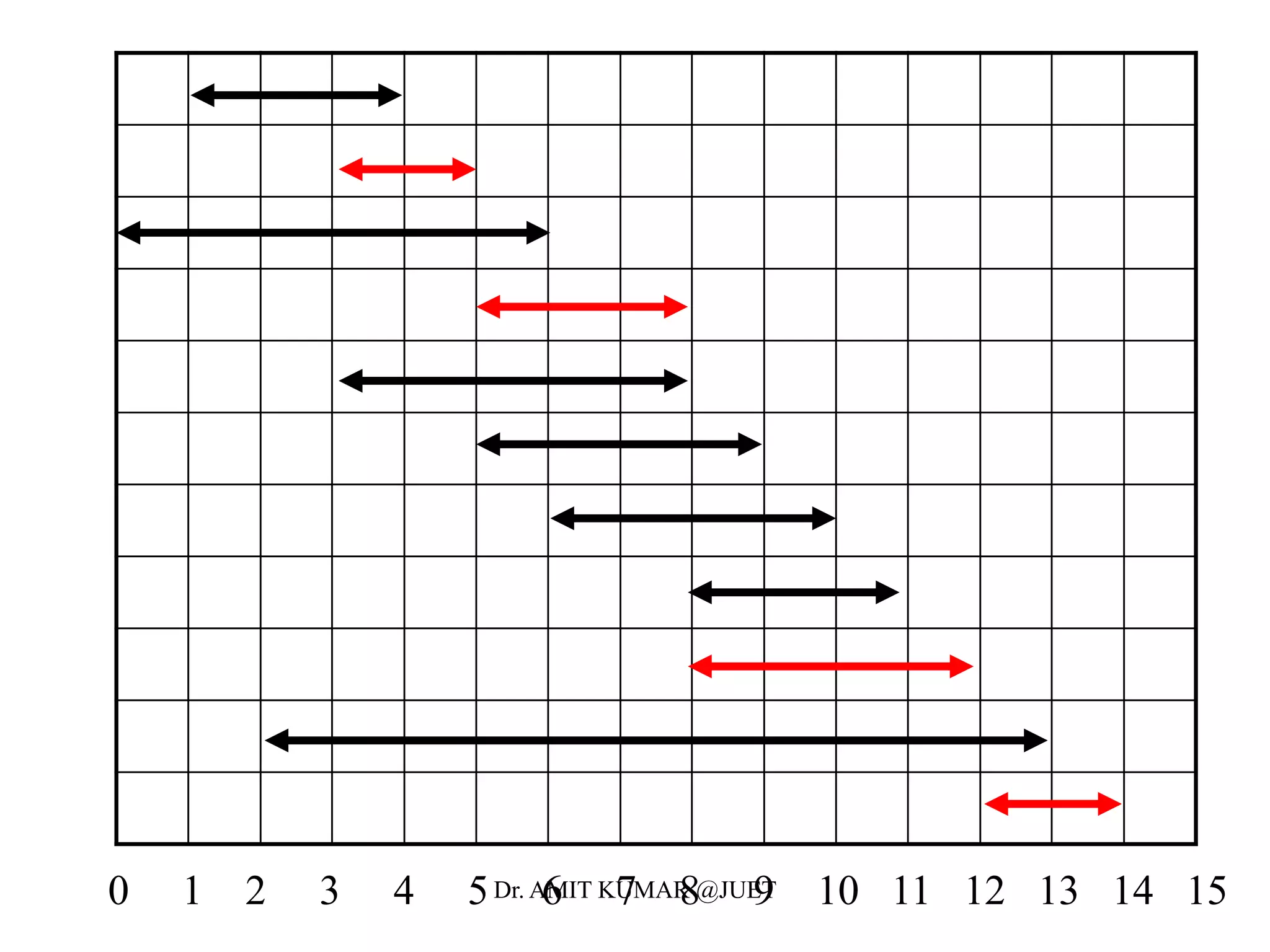
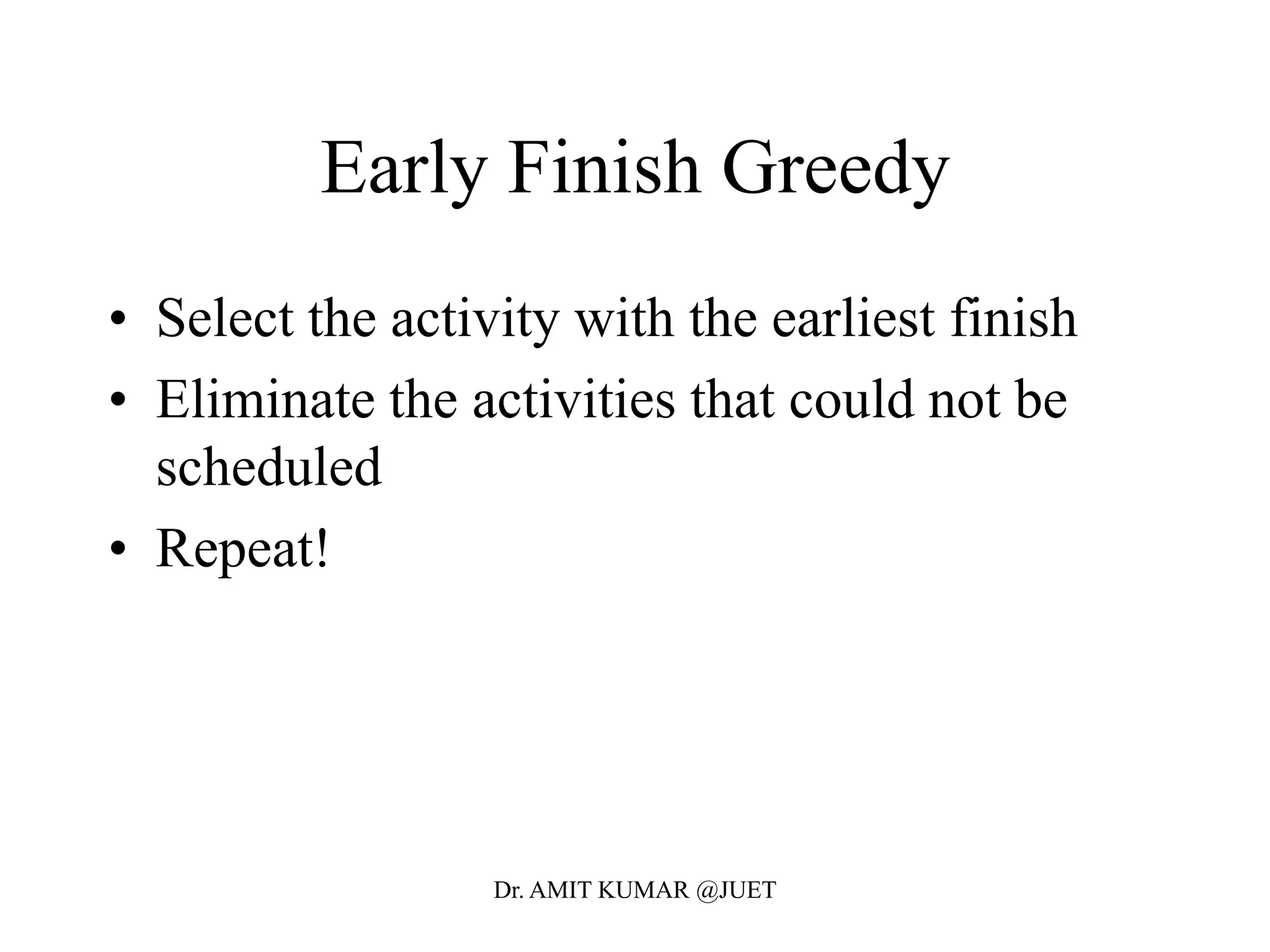
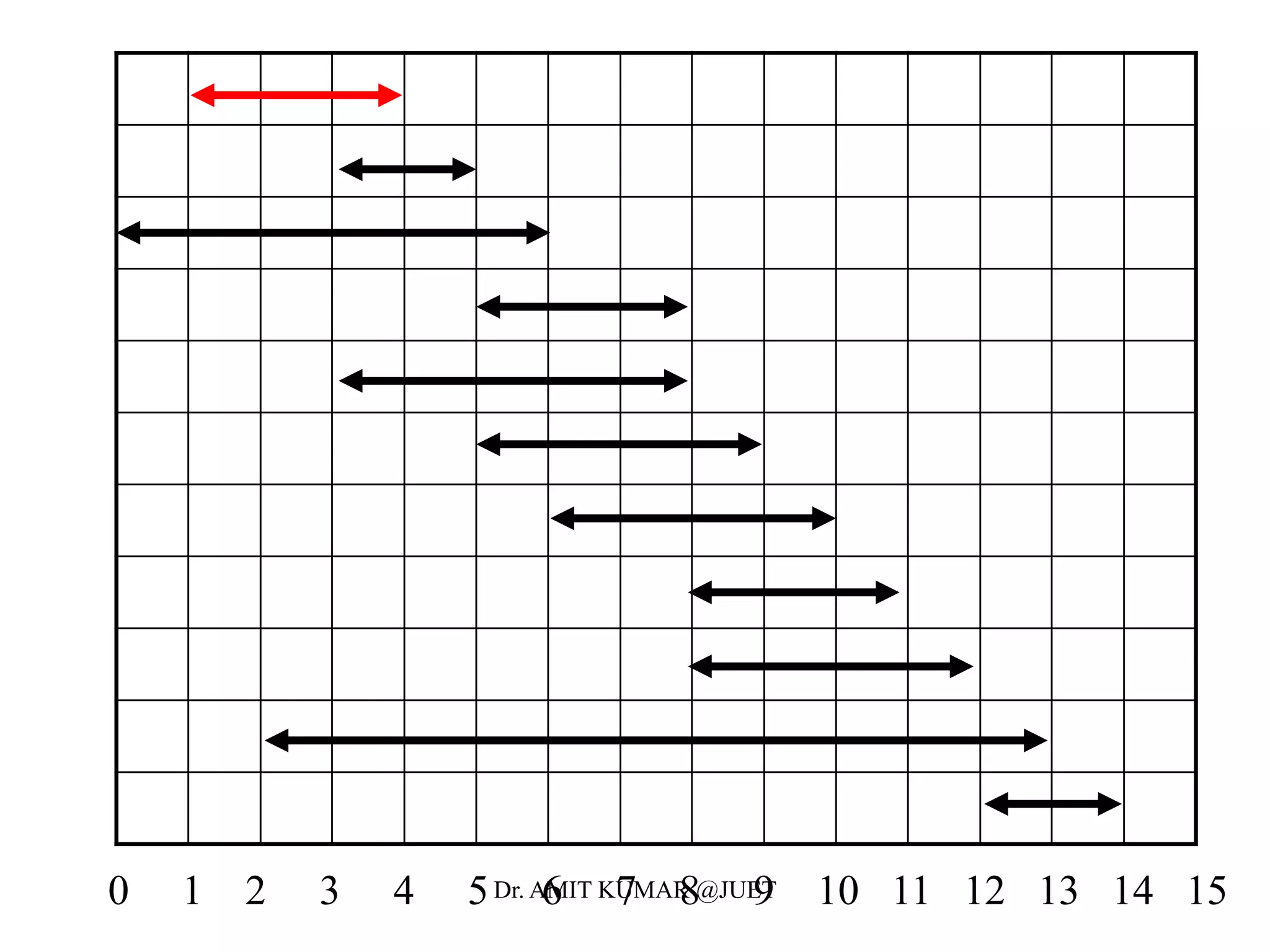
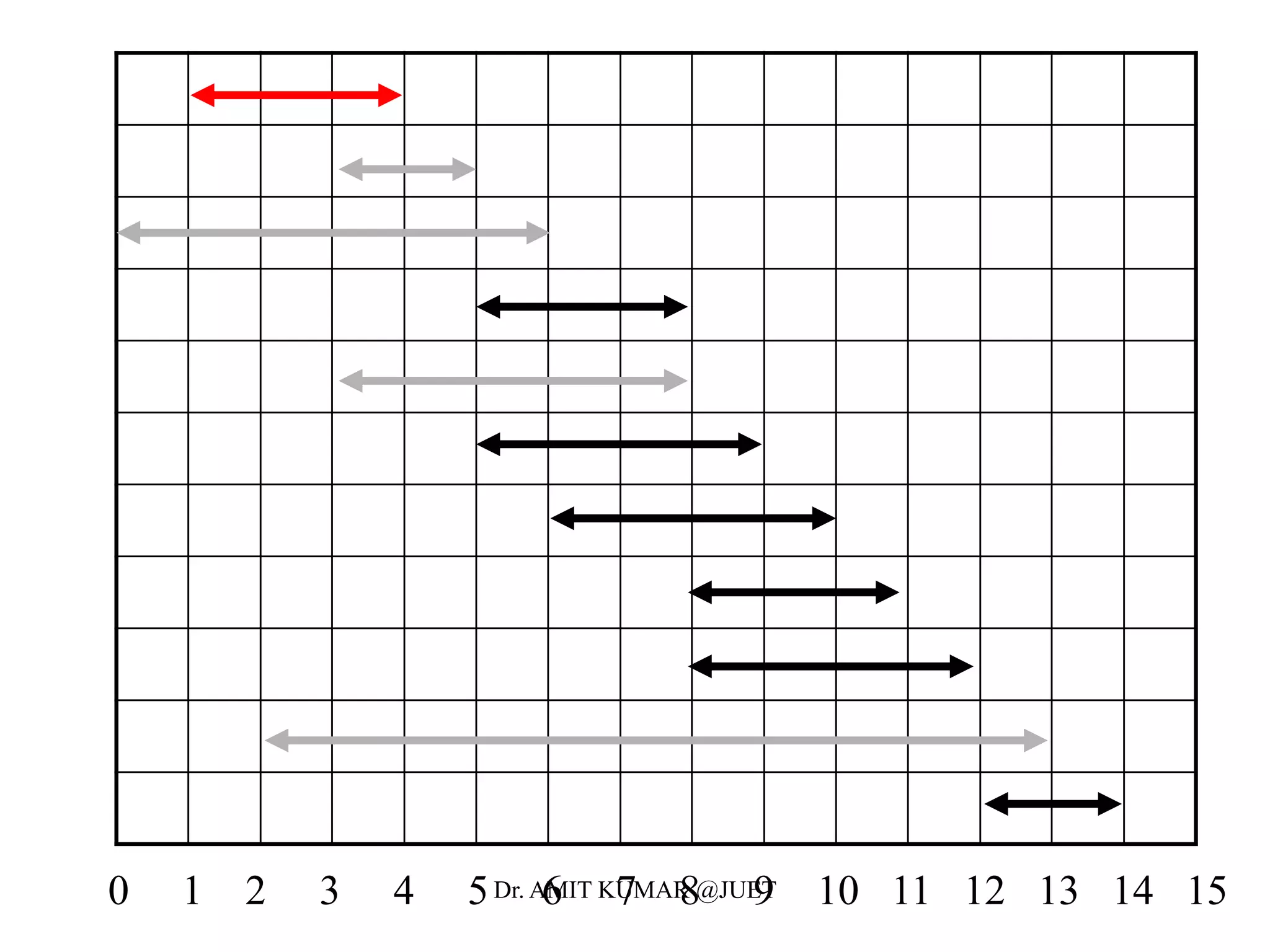
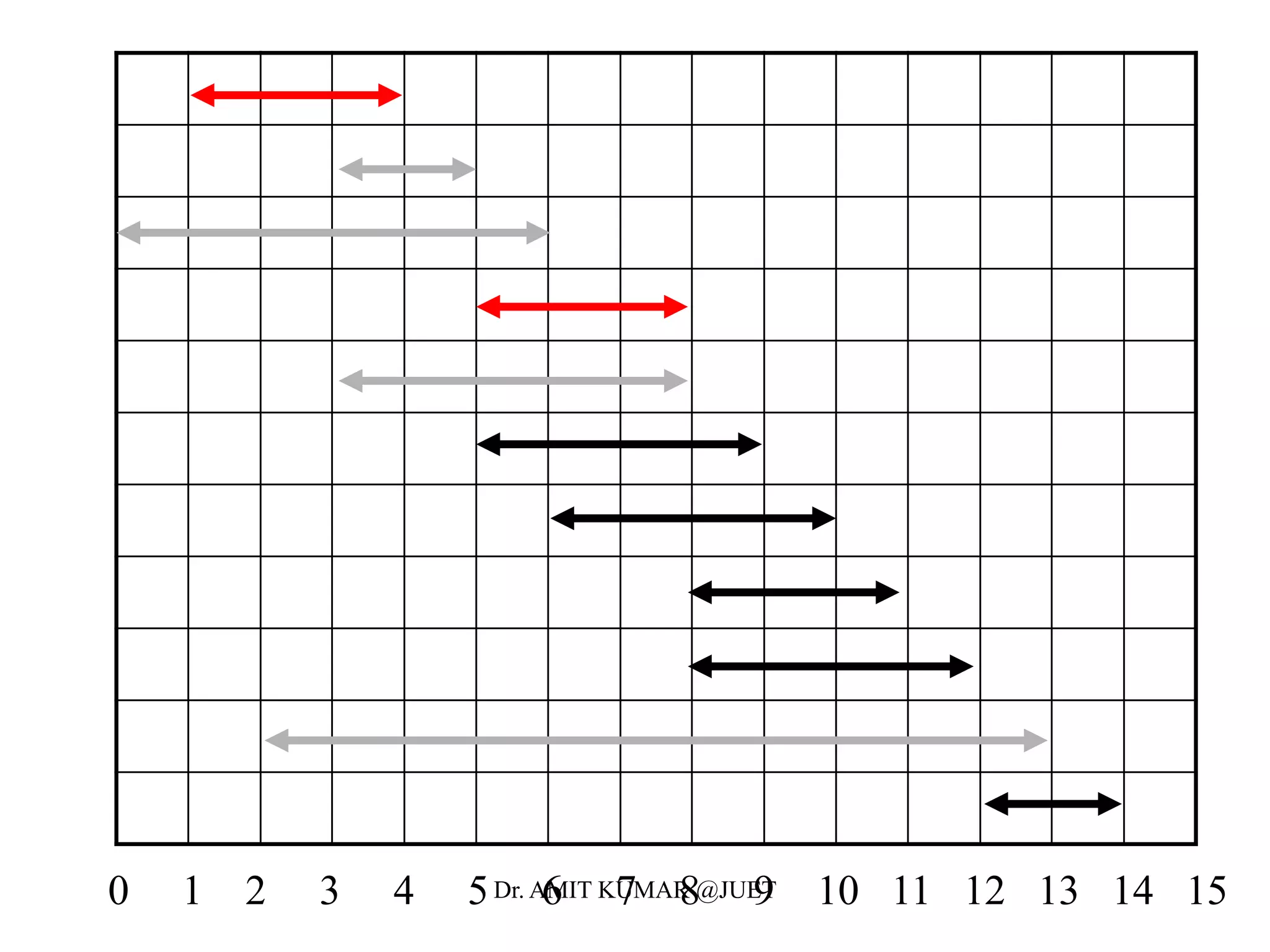
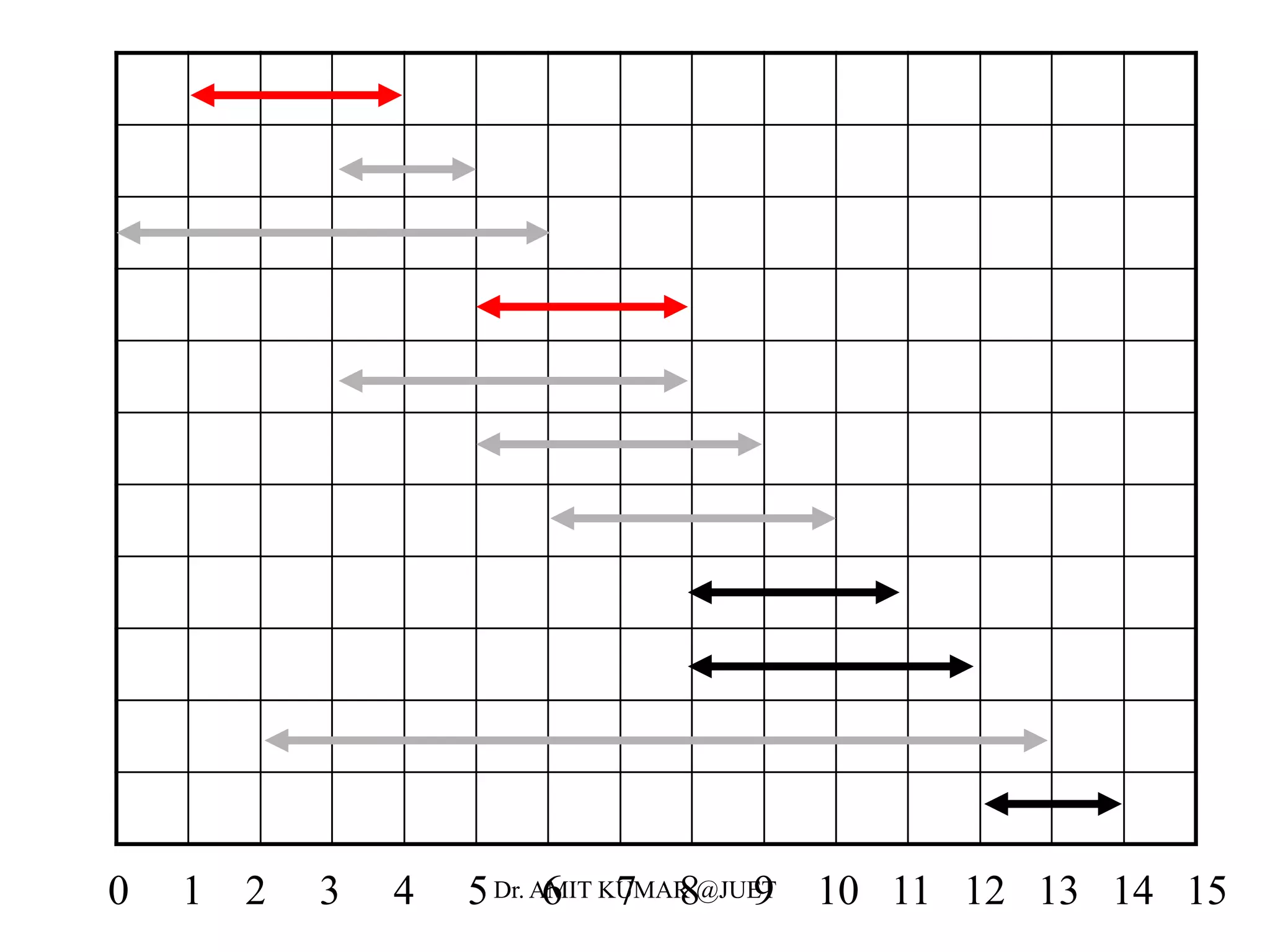
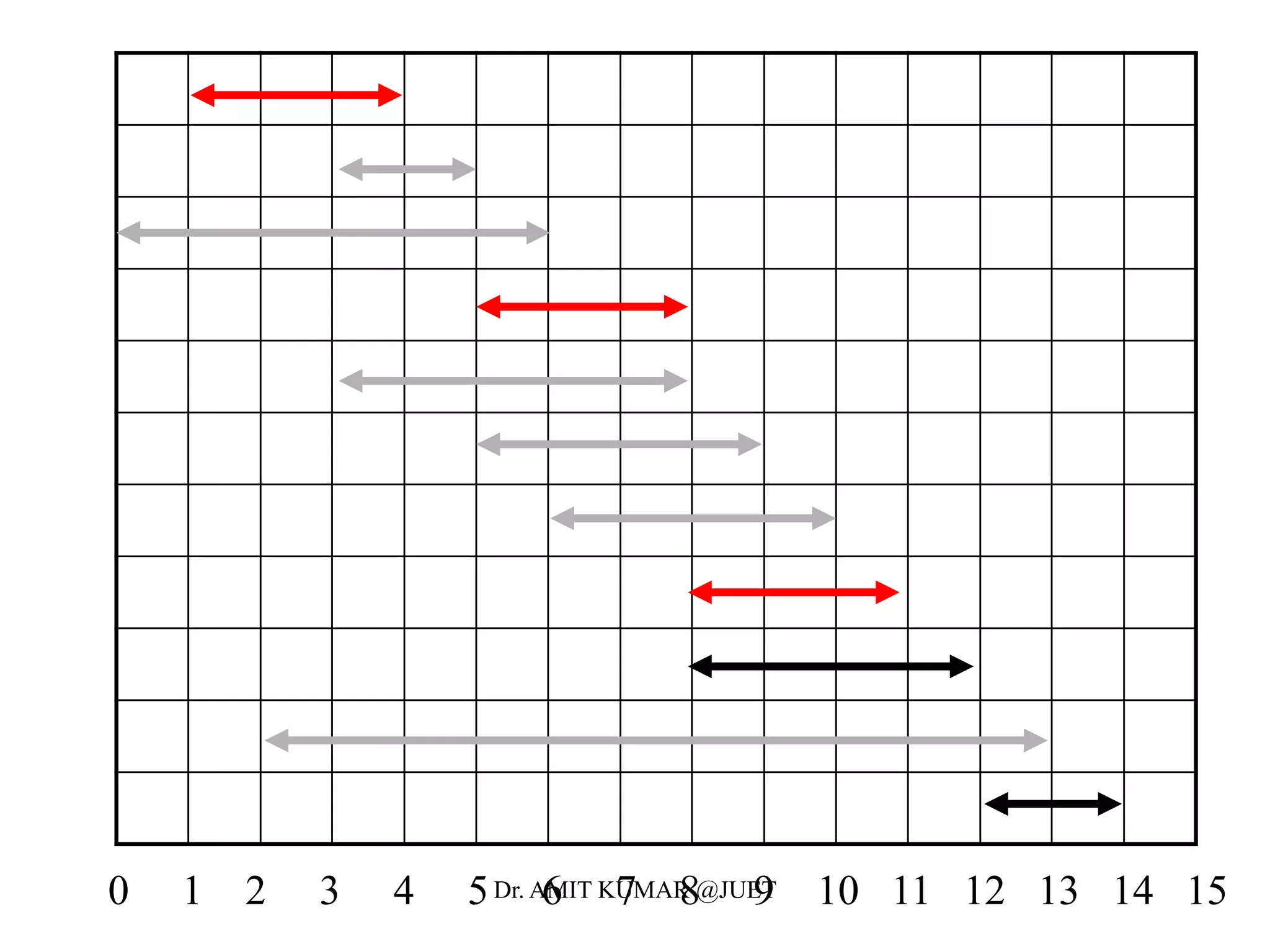
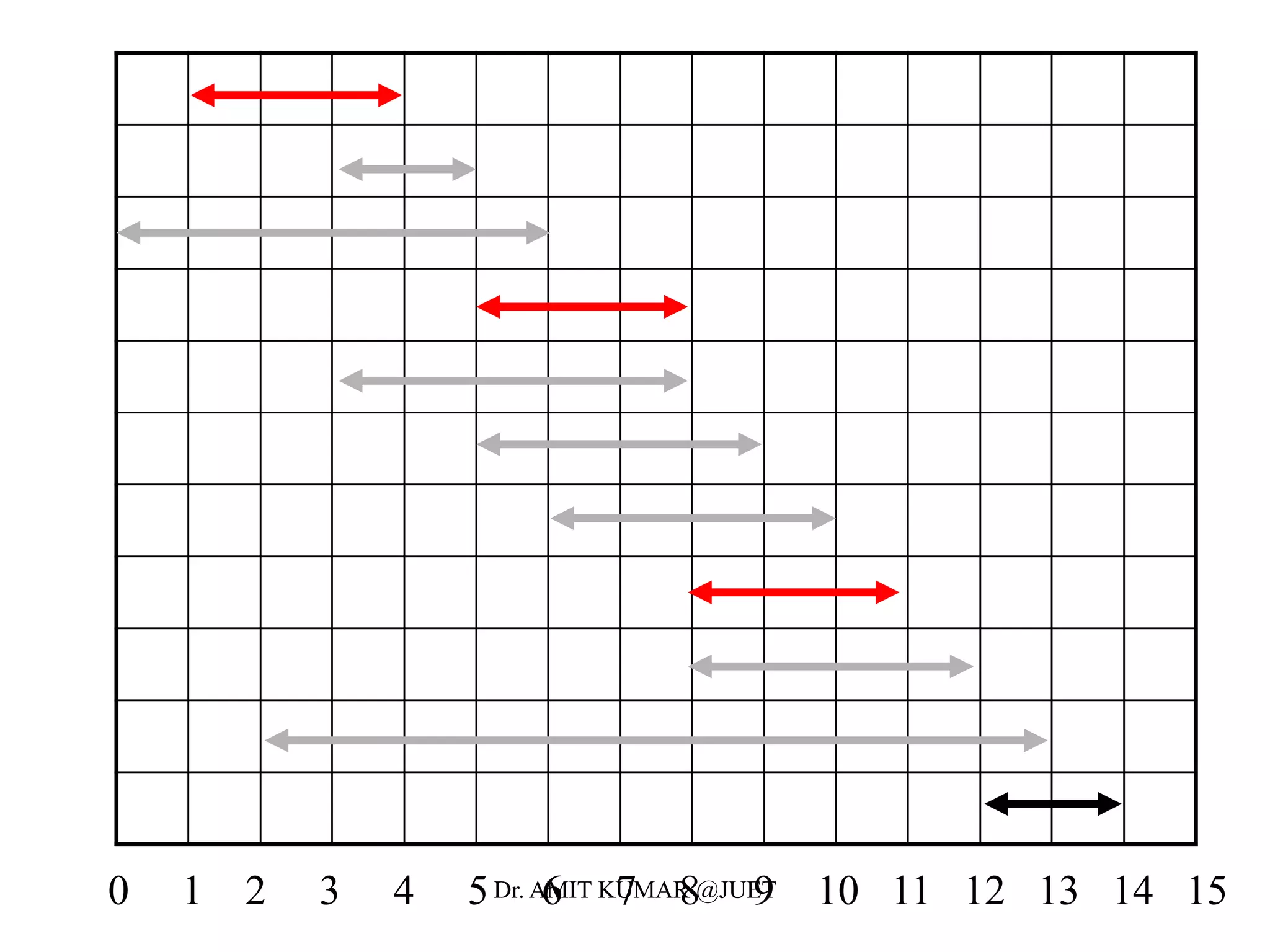
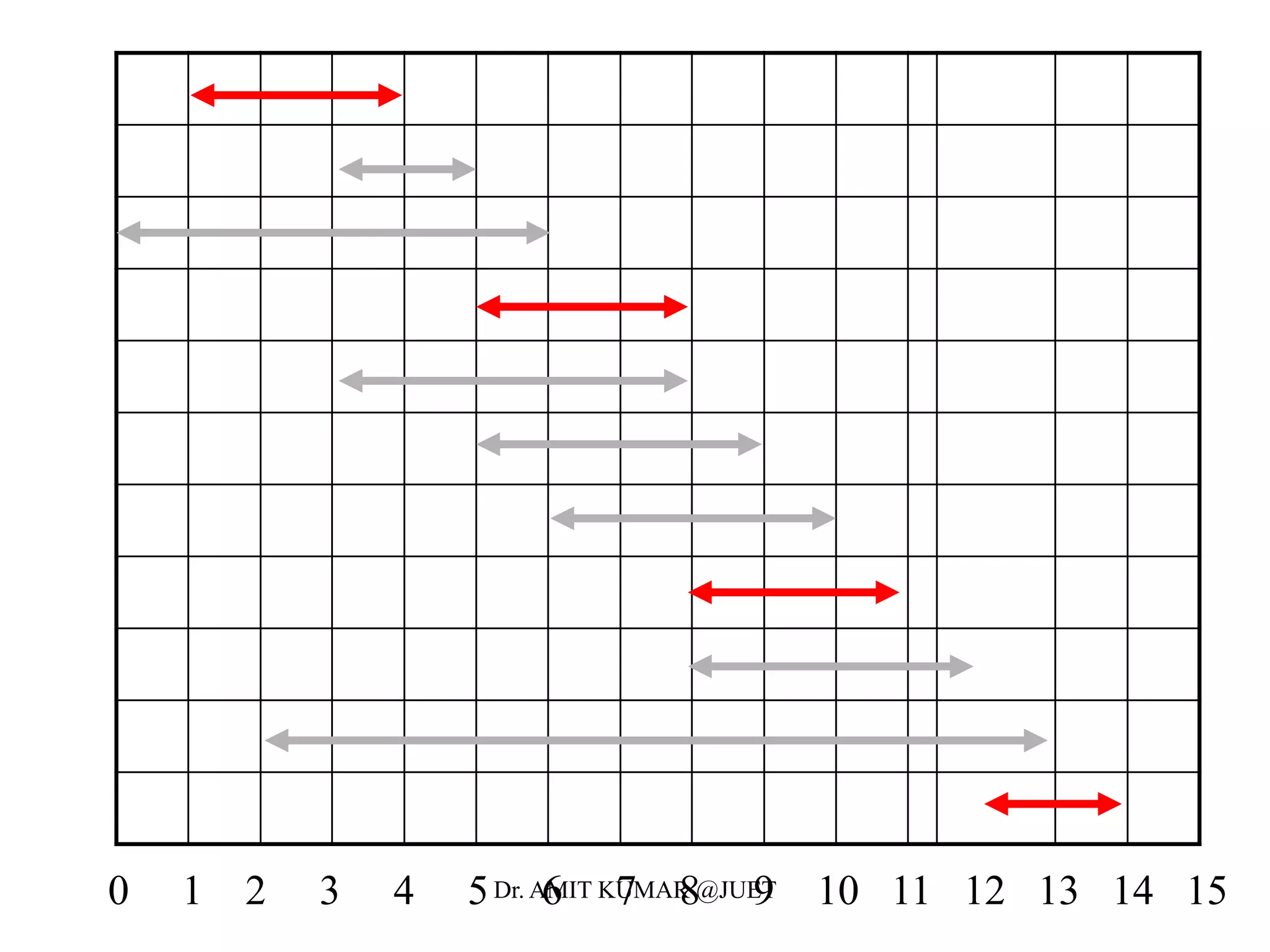
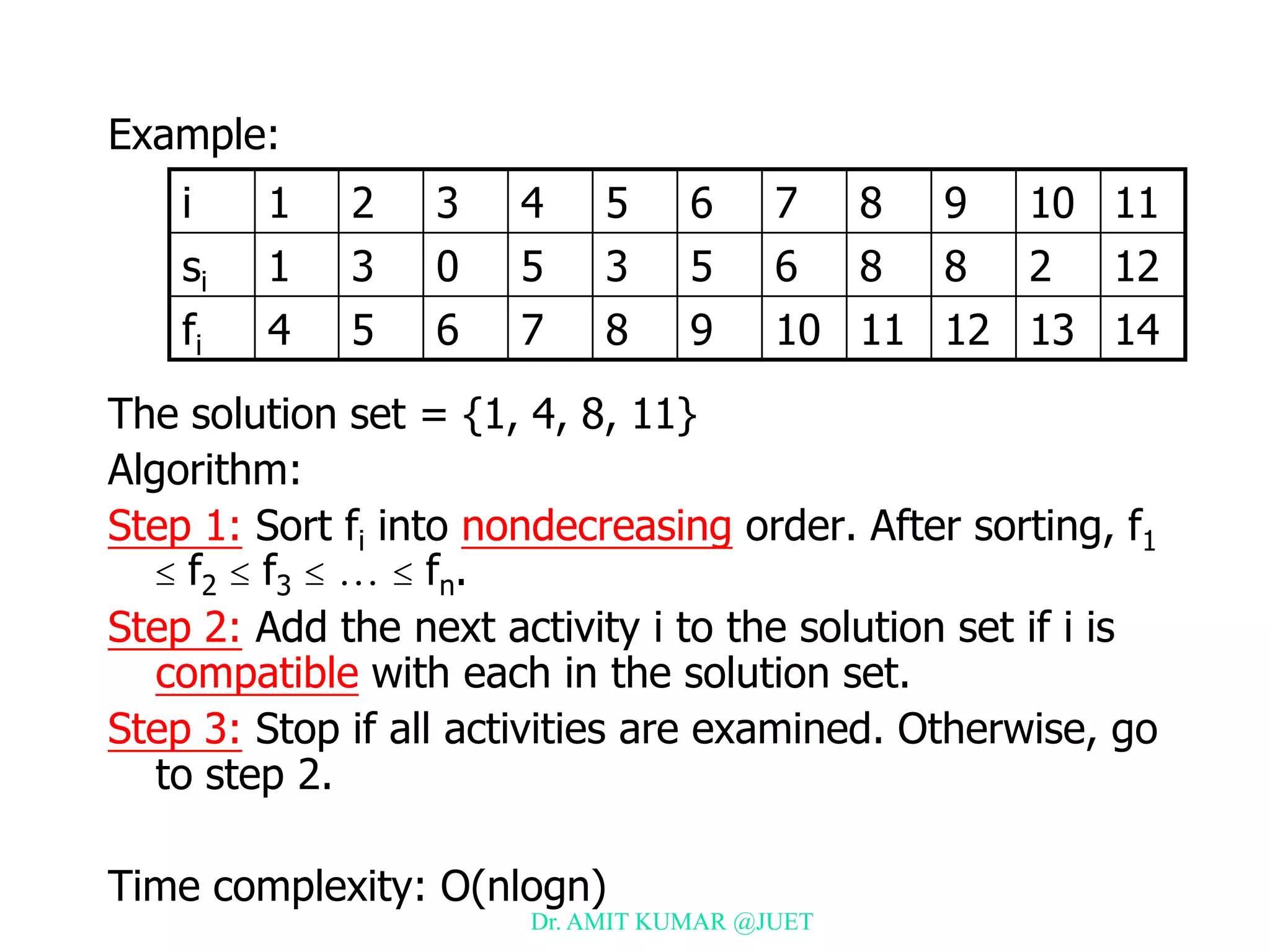
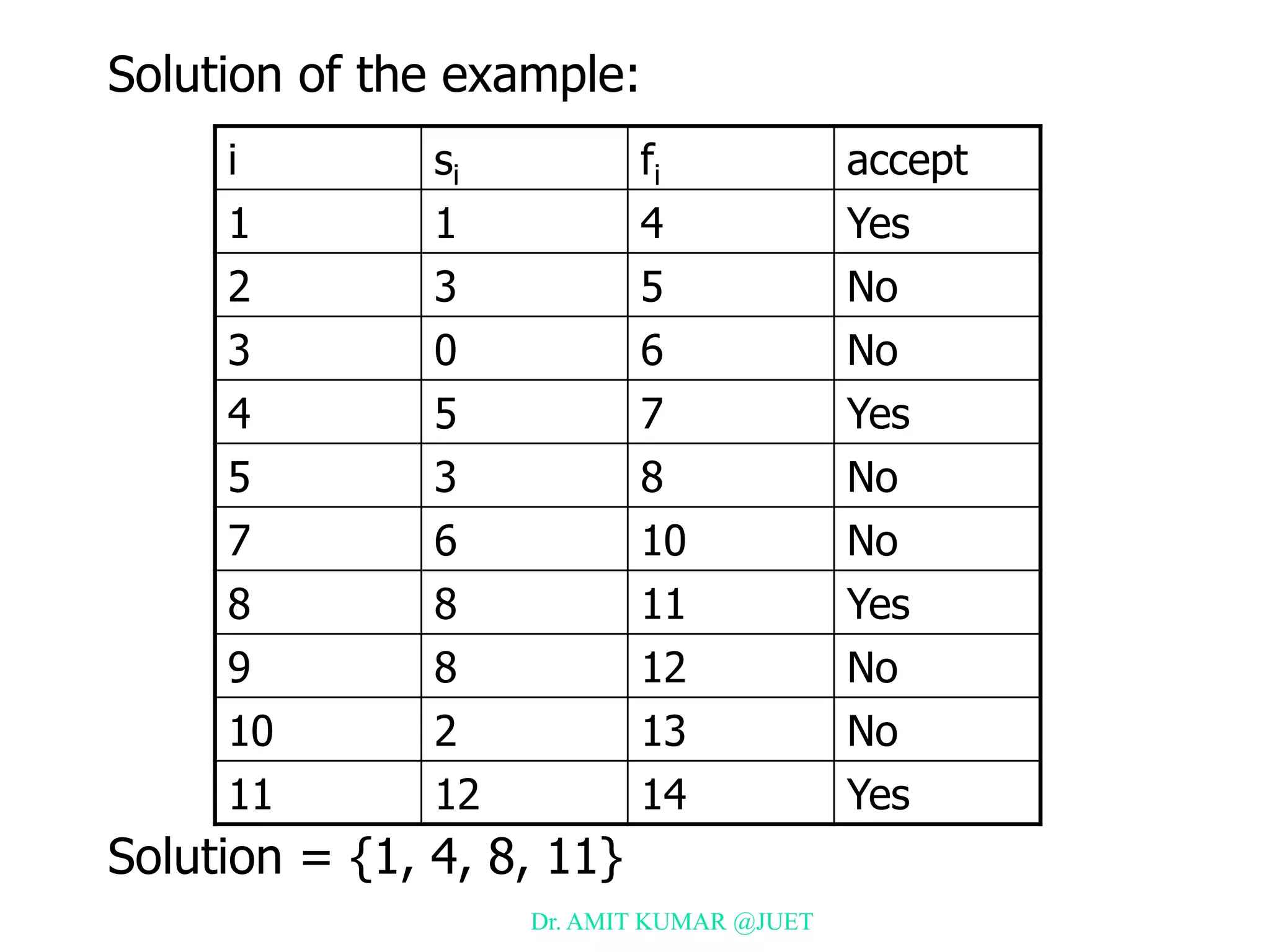
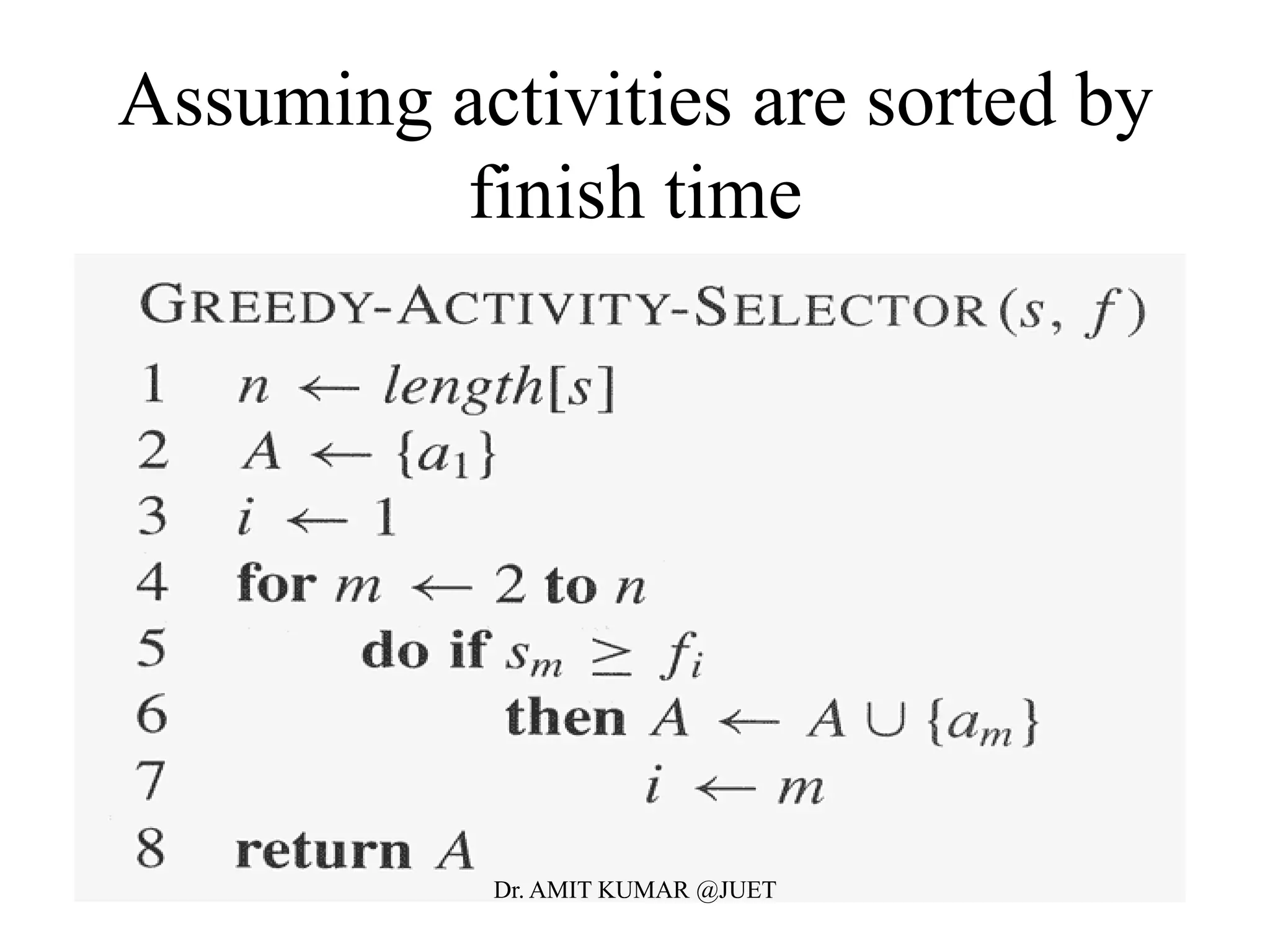
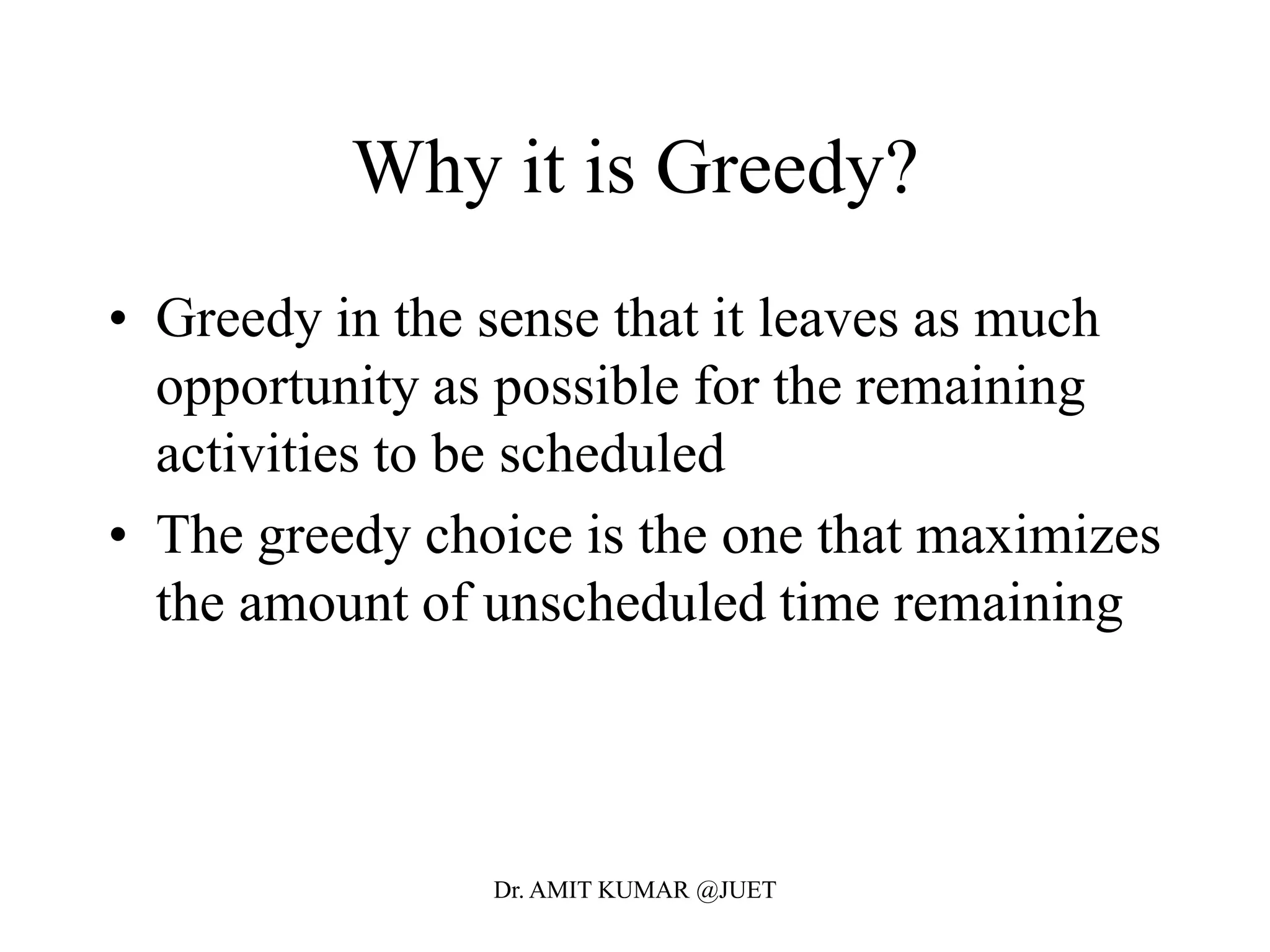
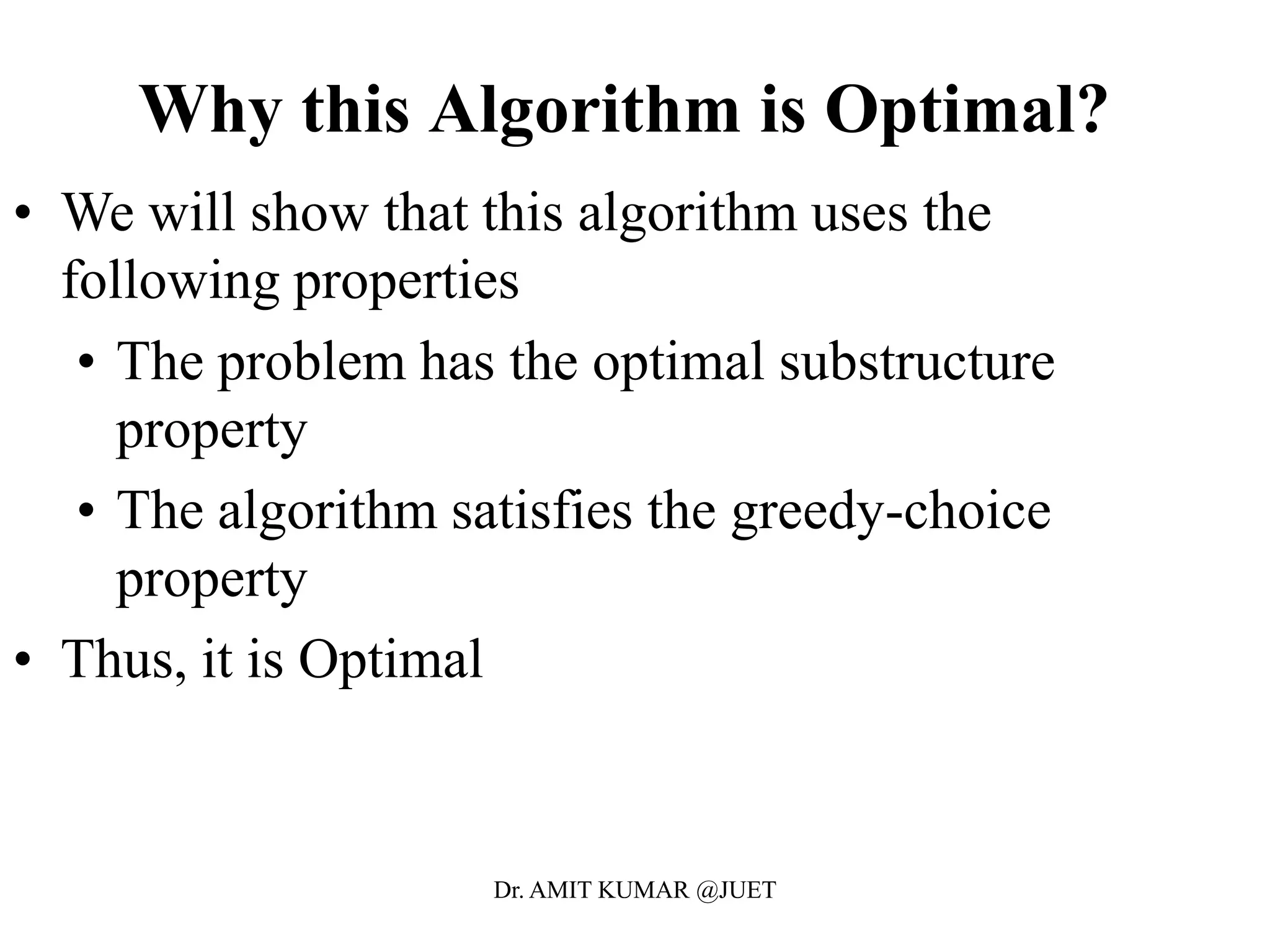
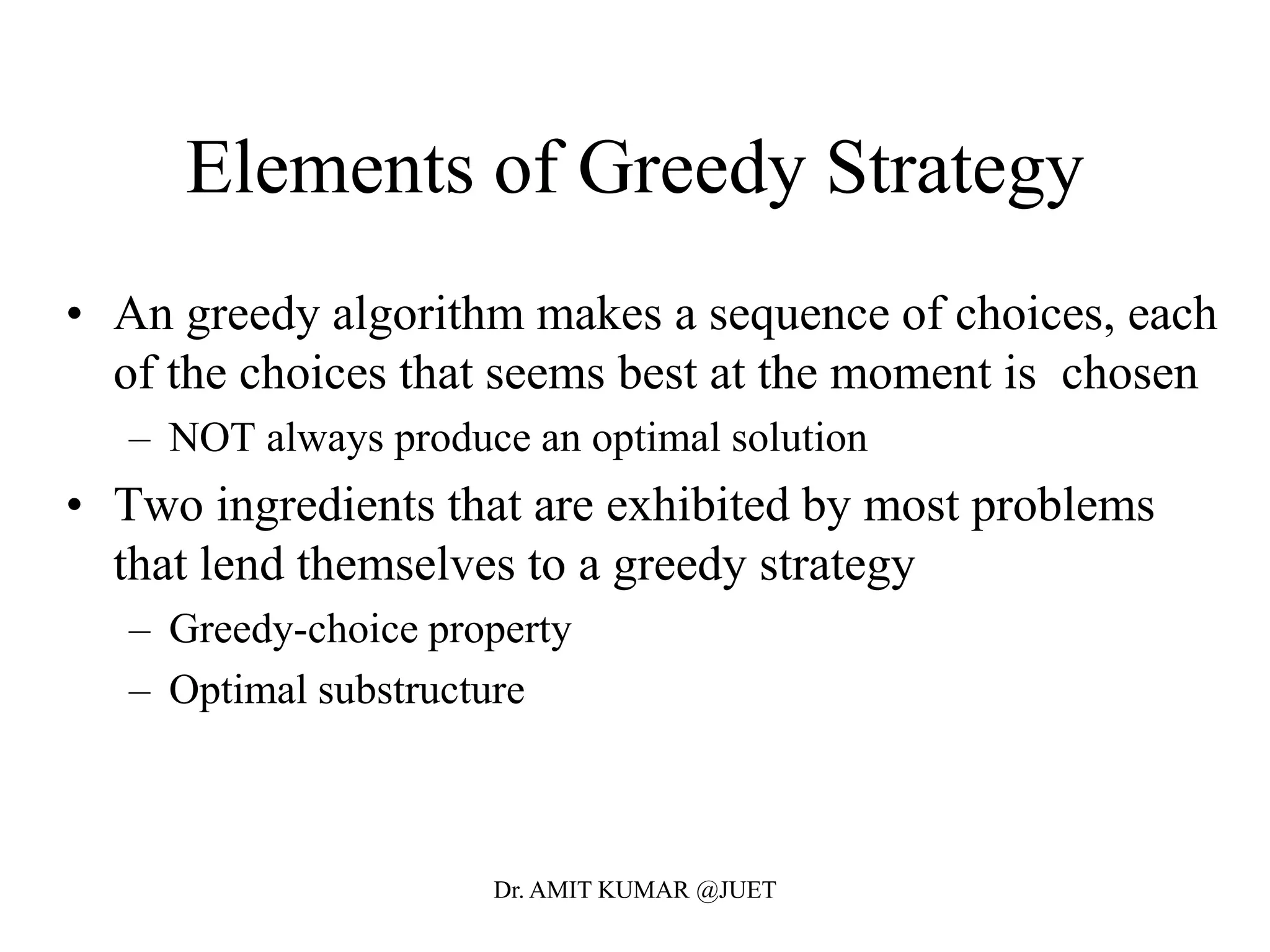
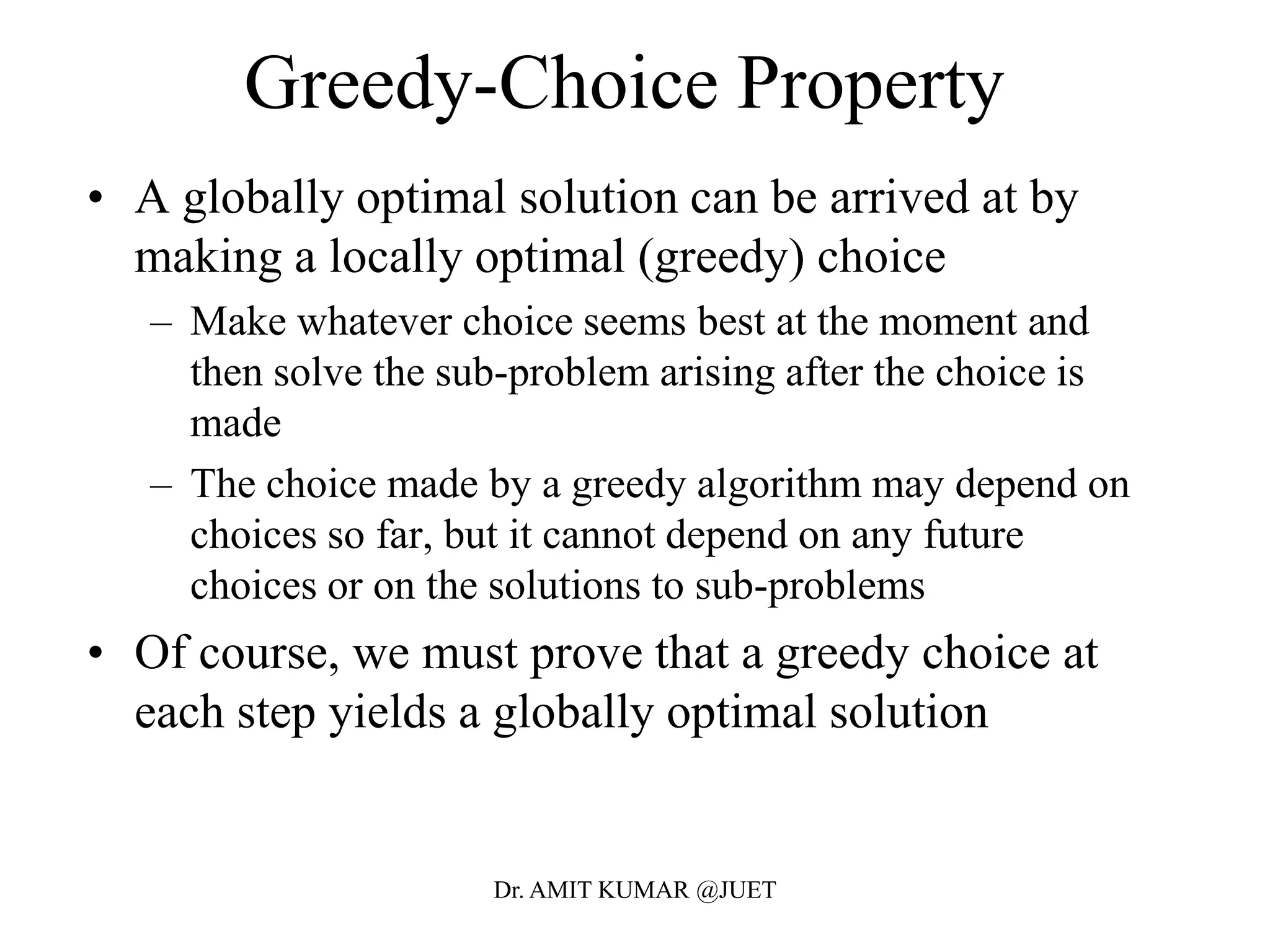
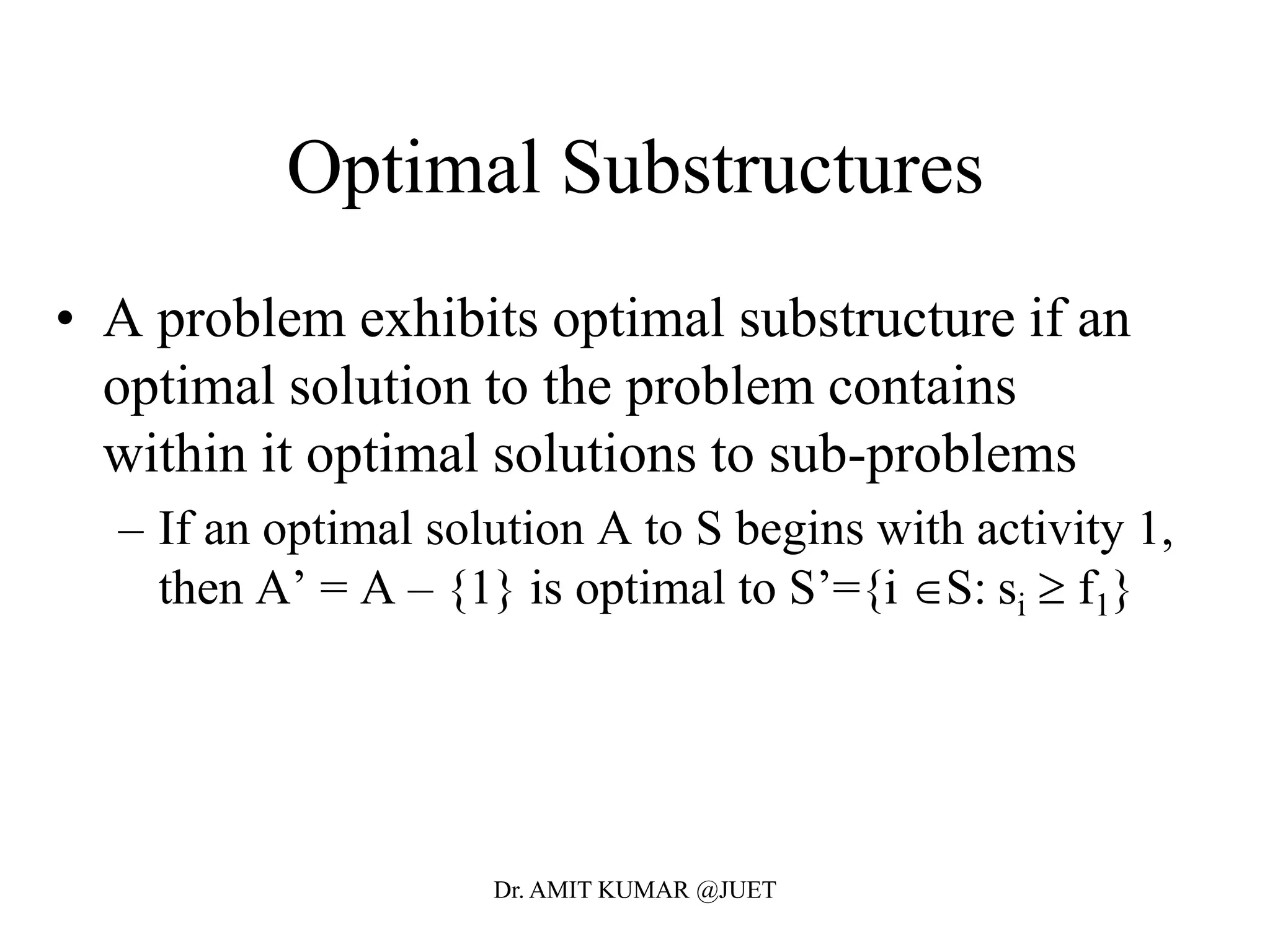
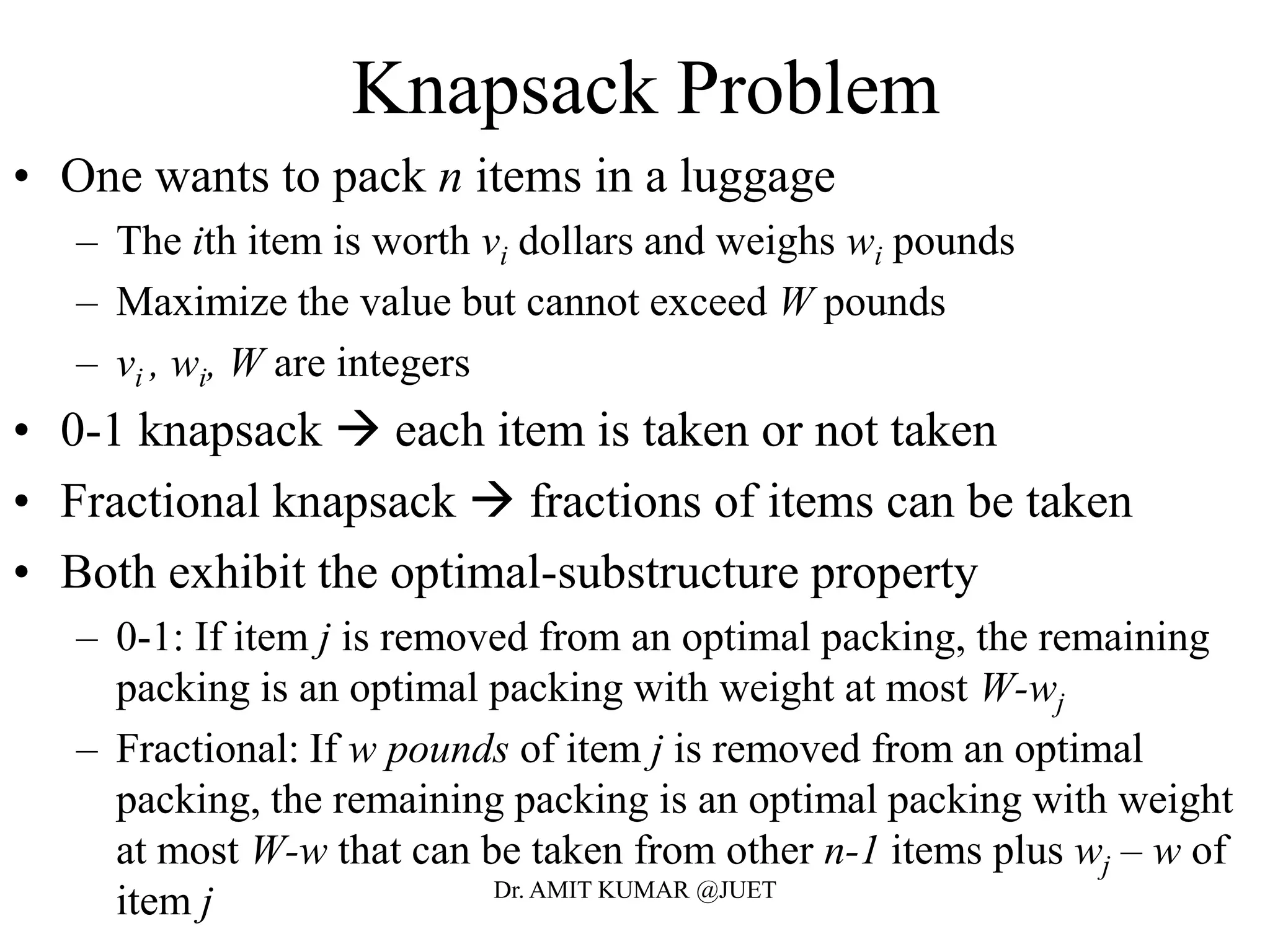
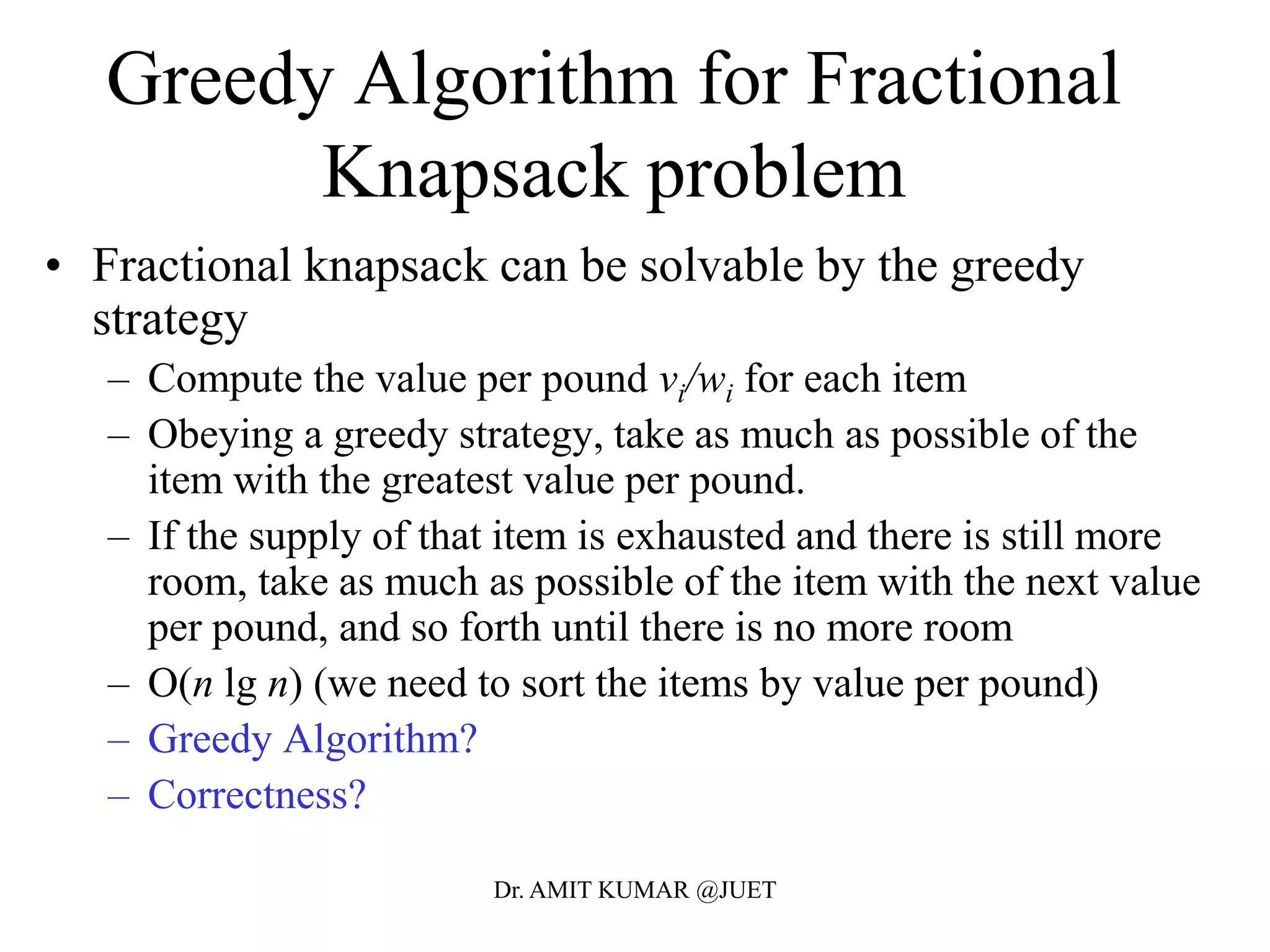
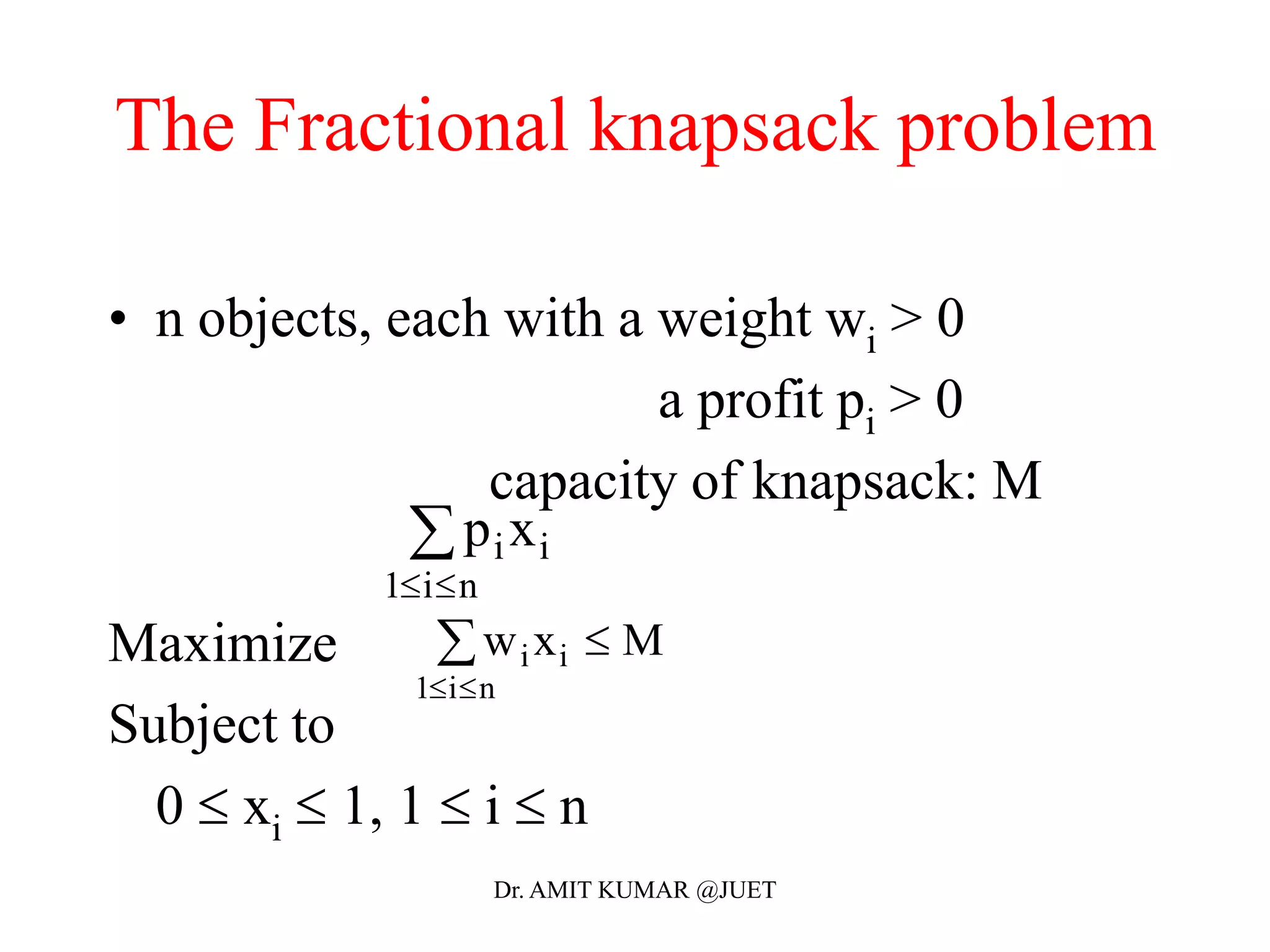
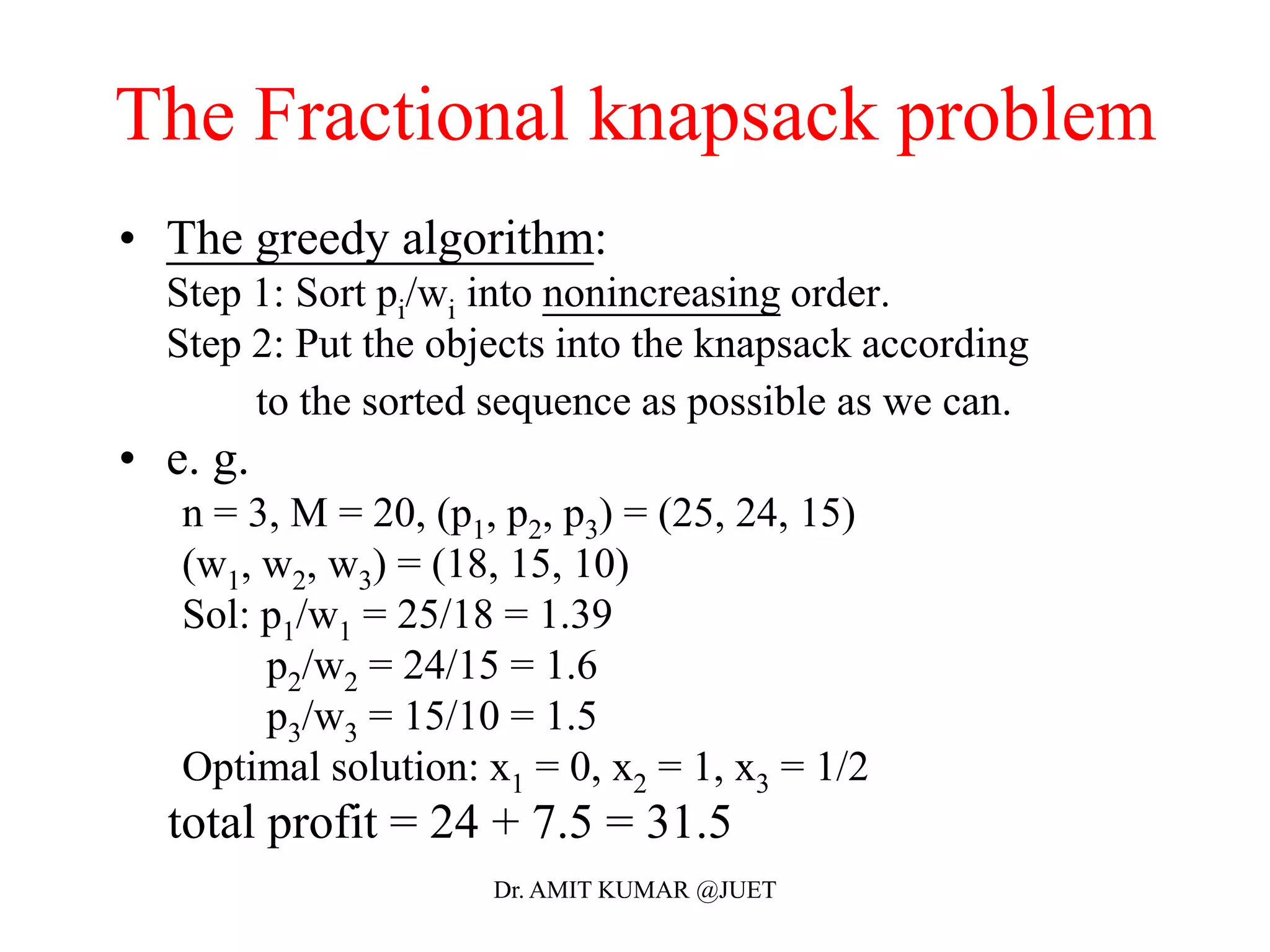
![Optimal substructures
• Define the following subset of activities which are activities that
can start after ai finishes and finish before aj starts
• Sort the activities according to finish time
• We now define the the maximal set of activities from i to j as
• Let c[i,j] be the maximal number of activities
• We can solve this using dynamic programming, but a simpler
approach exists
• Our recurrence relation for finding c[i, j] becomes
Dr. AMIT KUMAR @JUET](https://image.slidesharecdn.com/greedyalgorithmactivityselectionfractional-180514053110/75/Greedy-algorithm-activity-selection-fractional-30-2048.jpg)